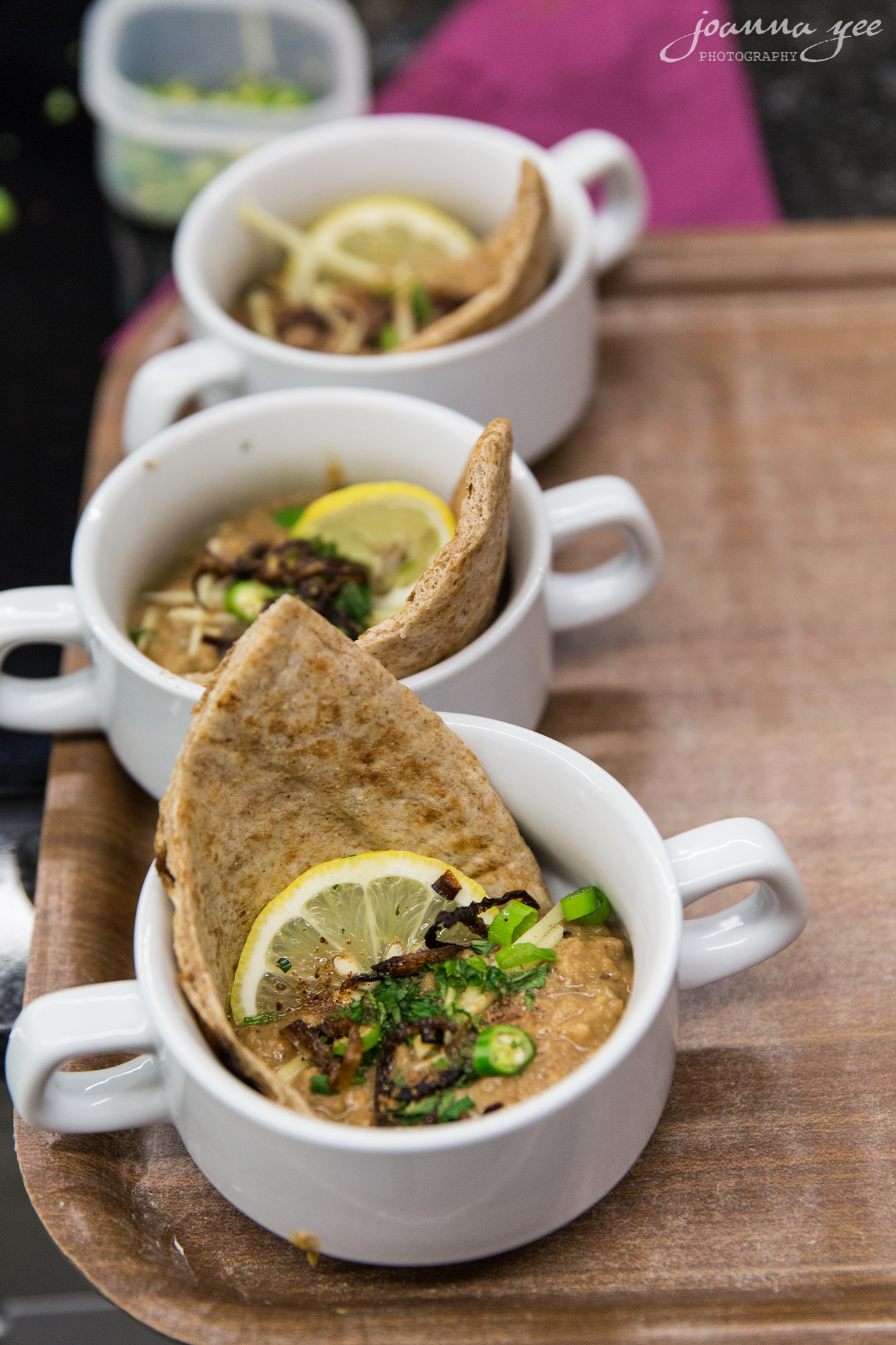To get everybody in the mood, a Sindhi-style welcome drink of spice-infused almond milk was followed by a starter of paneer and pomegranate samosas with chillied black chickpeas.
Beef Haleem, often eaten during Ramadan, was slow cooked until the spices, meat, lentils and wheat had melted into a delicious homogenous paste. Along with green daal, this was used to demonstrate tempering (tarka) where whole spices are infused in hot oil and mixed in to a dish at the start or end of cooking.
After cooking a classic Keema, ghee was poured over a lit charcoal briquette to lightly smoke the meat. Sumayya explained that this simple technique, "dhunai", is often used to impart a BBQ flavour to Pakistani food – although, she admitted, it should probably not be practised in close proximity to a smoke alarm.
Finally, dumm, the traditional Persian method of cooking under steam, was demonstrated through a delicious green chicken biryani. This resulted in a fantastically moist and flavoursome main course, served with an extra helping of useful tips – wash and soak your rice to remove excess starch; infuse the dish with aromatics such as lemon, mint leaves and whole chillies; and drizzle over saffron water, melted ghee and kewra (screw-pine water) for a really authentic flavour.
To ensure everyone went home happy we were all treated to Qawwami Seviyan, a sweet vermicelli dessert made with sugar, milk, saffron, fruit and nuts infused with cardamom and topped with rose petals. Judging by the smiles, this seemed to do the trick and capped off a fascinating, and extremely tasty, introduction to Pakistani cuisine.
*A massive thank you to Joanna Yee for all of the pictures in this post. Enjoy Noma!









